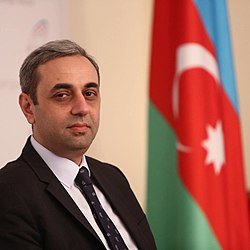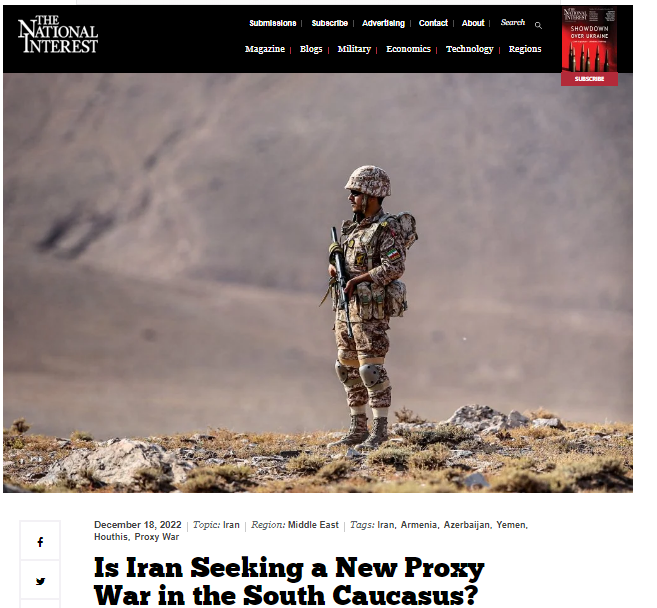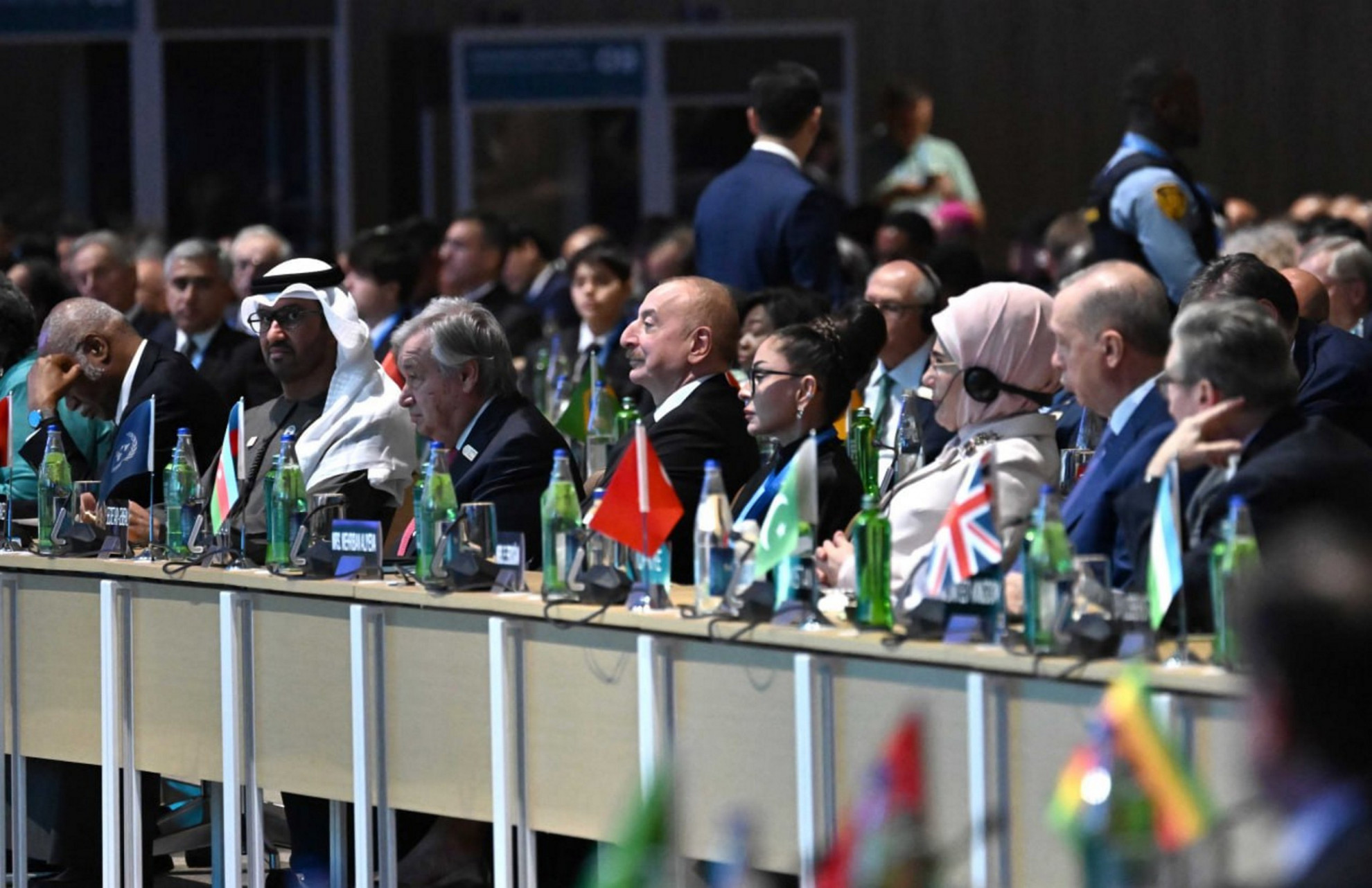Iran has a history of aiding and abetting proxy groups abroad. Is it now expanding such activities to its north?
The Cold War technique of proxy warfare, part of that era’s power struggles between states and carried on through third parties and non-state actors, still exists in the Middle East. The main states that do not want to come into direct confrontation in Libya, Yemen, and Syria realize their aims through non-state actors that they arm or attempt to arm. These actors are game disruptors rather than playmakers.
Analysis has revealed that this technique is actively being carried out by Iran. The Islamic Revolutionary Guard Corps (IRGC), and its el-Kuds branch in particular, are worthy of attention. Iran supports non-state actors and non-governmental organizations with unmanned aerial vehicles (UAVs) and missiles to increase its power and influence in the Middle East. Hezbollah in Lebanon, the Houthis in Yemen, and Shia non-state actors in Iraq and Syria are the types that Iran is supporting as it tries to shift the regional power balance in its favor.
Iran’s Recent History of Arming Proxies
A report prepared in 2020 by a group of experts on Yemen for the Human Rights Council draws attention to the UAV and missile power of the Houthis, who have attacked Saudi Arabia’s oil infrastructure. The report concluded that the UAVs and Quds-1 land attack cruise missiles used by the Houthis to attack the Saudi oil installations were obtained from Iran. According to the report, the Houthis continue to receive off-the-shelf parts for their drones and missiles via a network of intermediaries, as well as complete systems (including Iranian weapons) overland through Oman and by sea along Yemen’s southern coast. Using these routes, Iran has supplied missiles, UAVs, and other ammunition to the Houthis.
On November 25, 2019, the USS Forrest Sherman, an Arleigh Burke-class missile destroyer, stopped an unflagged wooden vessel in the Arabian Sea. U.S. Navy and Coast Guard personnel boarded the boat and discovered what they assessed to be Iranian missile components before handing the crew over to the Yemeni government. On February 13, 2020, members of the U.S. Navy boarded a boat in the Arabian Sea and confiscated a shipment of Iranian-made anti-tank and surface-to-air missiles. The seizure included 150 “Dehlavieh” anti-tank missiles as well as “three Iranian surface-to-air missiles, Iranian thermal imaging weapon scopes and Iranian components for unmanned aerial and surface vessels, as well as other munitions and advanced weapons parts.” CENTCOM said the weapons were en route to Yemen’s Houthi rebels.
Later that year, on November 8, the U.S. Coast Guard ship USCGC John Scheuerman and guided-missile destroyer USS The Sullivans intercepted “a traditional wooden sailing vessel known as a dhow in the Gulf of Oman.” Likewise, the U.S. Navy indicated it found 70 tons of a missile fuel component hidden among bags of fertilizer aboard a ship bound for Yemen from Iran—the first-such seizure in that country’s years-long war after a cease-fire there had broken down. This type of fuel is notably used in the preparation of missiles used by the Houthis to attack Saudi Arabian oil wells.
It has been confirmed by the United Nations that Iranian-made weapons were used by Khalifa Haftar in Libya. Israel’s representative at the UN, Danny Danon, wrote a letter to the UN Security Council and Secretary-General Antonio Guterres on May 8, 2020, claiming that, among the missiles used in 2019 by General Haftar, who was trying to overthrow the UN-recognized Libyan government, were Dehlaviyeh anti-tank guided missile systems. In December 2020, Guterres stated that a UN analysis of photographs of four anti-tank guided missiles in Libya found that one “had characteristics consistent with the Iranian-produced Dehlavieh” missile.
On September 12, 2022, Israeli defense minister Benny Gantz displayed a map that showed the Syrian locations of ten “production facilities for mid- and long-range, precise missiles and weapons” that Iran has “provided to Hezbollah and Iranian proxies.” He also said that Tehran is also “working to build missile and weapon industries in Lebanon and Yemen” as part of its campaign to destabilize the region.
A New Front in the Caucuses
Tehran, which thinks that the geopolitical balance in the region has changed against its interests after the Second Karabakh War, seems to have pushed diplomacy and cooperation into the background, especially over the past two years, and has instead brought military plans to the fore. The IRGC, which is especially active in the Middle East, is trying to achieve comparable effectiveness in the South Caucasus region. In August, the IRGC confirmed that it was conducting a joint drone exercise with the armies of Russia, Armenia, and Belarus at Kashan Air Base. Revolutionary Guard Aerospace General Ali Babali reported that the exercises, held within the framework of the 7th UAV competition, lasted for two weeks. Seventy personnel from four countries participated in this exercise. It was later revealed that UAVs supplied to Russia from Iran were used in the Ukraine war.
Further on, Iran’s Revolutionary Guard held military exercises along the Araz river on the border with Azerbaijan. This exercise, codenamed “IRGC Ground Force’s Might,” covered the East Azerbaijan and Ardabil regions. Mock heliborne parachute operations, night raids, helicopter combat operations, and suicide drone operations were carried out during the first day of the exercises. Construction of a temporary bridge over the Aras River that separates Iran from Azerbaijan and Armenia, seizure and control of supply roads and heights, and offensive, as well as destructive operations against designated targets, constituted other parts of the drills.
After the IRGC’s exercises, on October 20, Iranian foreign minister Hossein Amir-Abdollahian visited Armenia as the head of a delegation. During his visit, Abdullahian participated in the opening of the Kafan consulate, where he said that “the security of Armenia is our security.” A few weeks later, the former ambassador of Iran in Azerbaijan, Mohsin Pakain, said that these exercises were aimed at protecting Armenia against Azerbaijan.
Former Commander of the IRGC and top military aide to Iran’s Supreme Leader, Yahia Rahim Safavi, stated on October 18 that twenty-two countries in total, including Armenia, had submitted official requests to purchase Iranian-made UAVs.
After this, it was revealed that twenty-seven Iranian citizens went to Karabakh, which is Azerbaijani territory, between November 26 and 30. Azerbaijani political activists appealed to Iran’s Baku embassy to make a statement about this unauthorized visit. As the Iranian embassy did not respond, the Azerbaijani press put out the news that Iran had supplied 500 Dehlavieh and 100 Almas missiles to Armenia. These missiles were previously seen in Yemen and Libya, but were intercepted before reaching non-state actors there. It was reported that these missiles were supplied to Armenia by the Al-Kuds branch of the IRGC, which is the organization’s de facto “manager” of Iran’s proxy wars in the Middle East.
At the same time, Tehran maintains support for proxy groups of pro-Iranian Azerbaijani citizens. Azerbaijani president Ilham Aliyev demanded in April of this year the extradition of twenty-two Azerbaijani citizens who were officially operating in Iran against Azerbaijan under the name of Huseyyniyun, which was created and supported by the IRGC Quds Force. Then, in August, the prosecutor general of Azerbaijan visited Iran and presented his counterpart with a list prepared by Azerbaijani law enforcement agencies. It is reported that this list includes persons who make threats against the state structure of Azerbaijan. To this day, however, Iran has yet to extradite these people, and Iranian officials have indirectly made it known that they will never be deported to Azerbaijan.
Iranian officials, including former diplomats and experts, claim that, after the Second Karabakh War, the effectiveness of NATO, the EU, and Israel in the South Caucasus has increased, through Azerbaijan in particular. Iranian authorities, seeking to counter this supposed situational change, have openly declared that they will not allow such to continue, and are considering arming Armenia, training and arming the separatists in Karabakh for proxy warfare, and supporting pro-Iranian groups in Azerbaijan as a solution. Russia is also involved, for it allows Iranian personnel to enter the Karabakh region illegally.
All this only serves to further destabilize the South Caucasus, at a time when the region is of increasing importance to global energy security, supply chain diversification, and more.
https://nationalinterest.org/feature/iran-seeking-new-proxy-war-south-caucasus-206030








